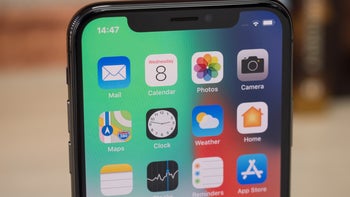Apple could drop the notch and Face ID on the iPhone as soon as next year

The Apple iPhone X, first released in 2017, introduced iPhone users to the "notch" and Face ID. According to LetsGo Digital (via TechRadar) illustrations from an Apple patent application and whispers from the supply chain both indicate that the top-of-the-line 2020 iPhone models could phase out Face ID. The report says that Apple will replace the secure facial recognition system with an under-display fingerprint scanner or a biometric sensor located on the side of the phone (like the Samsung Galaxy S10e).
Apple recently filed a patent application in Japan dated December 23rd that included illustrations showing a notch-free iPhone. Besides having a Touch ID fingerprint scanner under the display, the TrueDepth Camera would also be moved there as well. This would be the layout for the iPhone 12 Pro and iPhone 12 Pro Max only. The other 2020 iPhone models, the iPhone 12 and iPhone 12 Plus, would continue to feature a notch containing the True Depth Camera and the sensors for Face ID. Having multiple designs for the same year is not foreign to Apple. In 2017, it introduced the iPhone 8 and iPhone 8 Plus with the "old-style" Touch ID home button and the iPhone X which featured the notch, Face ID (replacing Touch ID) and the edge-to-edge display.
The Apple iPhone 12 Pro models could be notchless with an under-display fingerprint scanner
The December 23rd patent application also reveals that the iPhone 12 Pro and iPhone 12 Pro Max will have a rectangular screen inside a rounded case. This is what all models looked like until the iPhone X was launched; the latter features a rounded display inside a rounded case and this look has been employed on both the 2018 and 2019 iPhone models.

Patent illustrations show that Apple is looking to remove the notch from the high-end 2020 iPhone models
The use of an under-display camera on the 2020 high-end models would help Apple catch up with some of the innovative Chinese phone manufacturers. This summer, both Oppo and Xiaomi showed off such technology and the first phones to feature it will be unveiled at MWC 2020 at Barcelona in February.
Well regarded TF International analyst Ming-Chi Kuo expects Apple to release five iPhone models next year (which, by the way, starts tomorrow). These include the iPhone 9, a budget-priced 4.7-inch iPhone that copies the design of the iPhone 8 and should be equipped with the current A13 Bionic chipset and a bit more memory. This model could be launched during the first quarter of 2020.
Next September, Kuo sees Apple releasing four handsets including the iPhone 12 and iPhone 12 Plus. These two phones will be the successors to the iPhone 11; the iPhone 12 will carry a 5.4-inch display while the iPhone 12 Plus will feature a larger screen of an undetermined size. The iPhone 12 Pro and iPhone 12 Pro Max will sport 6.1-inch and 6.7-inch OLED panels respectively and will add a Time of Flight sensor to the rear camera module. And if today's report is right, those two phones will chuck Face ID and the notch.
If Apple decides to remove Face ID from the iPhone 12 Pro models, it still might be able to offer a secure facial recognition system by using the Time of Flight (ToF) sensor that should be added to the higher-priced units. ToF sensors bounce infrared beams off of a subject and measure how long they take to return to the phone. With this data, the iPhone can calculate more accurate depth information which can be used to enhance AR functionality and produce a more natural bokeh blur on portraits. The technology can also create 3D maps of a user's face similar to the structured light method employed by Face ID. In fact, back in November 2017 there was talk about Apple using a ToF sensor to offer a rear-facing Face ID.










Things that are NOT allowed: